Module 4
CHANNELS
LEARN
This module provides theoretical and practical information, including examples and exercises, related to the relevance and use of channels in the Business Model Canvas, how these should be applied and how organizations can capitalize on possibilities related to communication via various channels.



Channels
Introduction
The Channels block describes how organizations communicate with and reach their customer segments to deliver their product or service and to communicate their value proposition. It incorporates customer support and after-sales service.
There are 5 distinct channel phases:
-
- Awareness
- Evaluation
- Purchase
- Delivery
- After-Sales
Purpose
This module provides theoretical and practical information, including examples and exercises, related to the relevance and use of channels in the Business Model Canvas, how these should be applied and how organizations (established and start-ups) can capitalize on possibilities related to communication via various channels.
Learning Outcomes
After the completion of this module the learner will be able to:
-
- Recognize each of the distinct various phases of communication related to channels and their aims;
- Distinguish between the communication channels related to promotion (awareness, evaluation, and after-sales customer support) and those phases related to place (purchase and delivery);
- Appraise different channels to communicate the organization’s value proposition;
- Examine and critique current channels to improve communication with all customer segments and to improve customer relationships;
- Consolidate and align the communication avenues listed under channels with customer segments, customer relations and value creation;
- Apply creative thinking to design cost-effective future strategies and innovative channels.
Keywords
-
- Communication
- Marketing channels
- Sales channels
- Direct distribution channels
- Indirect distribution channels
- Market segmentation
- Customer support channels
- Customer service channels
- Channel functions
- Strategy
- Innovation
- After-sales
Theoretical background
The information related to Channels fits into the right-hand side of the Business Model Canvas under Customer Relationships:
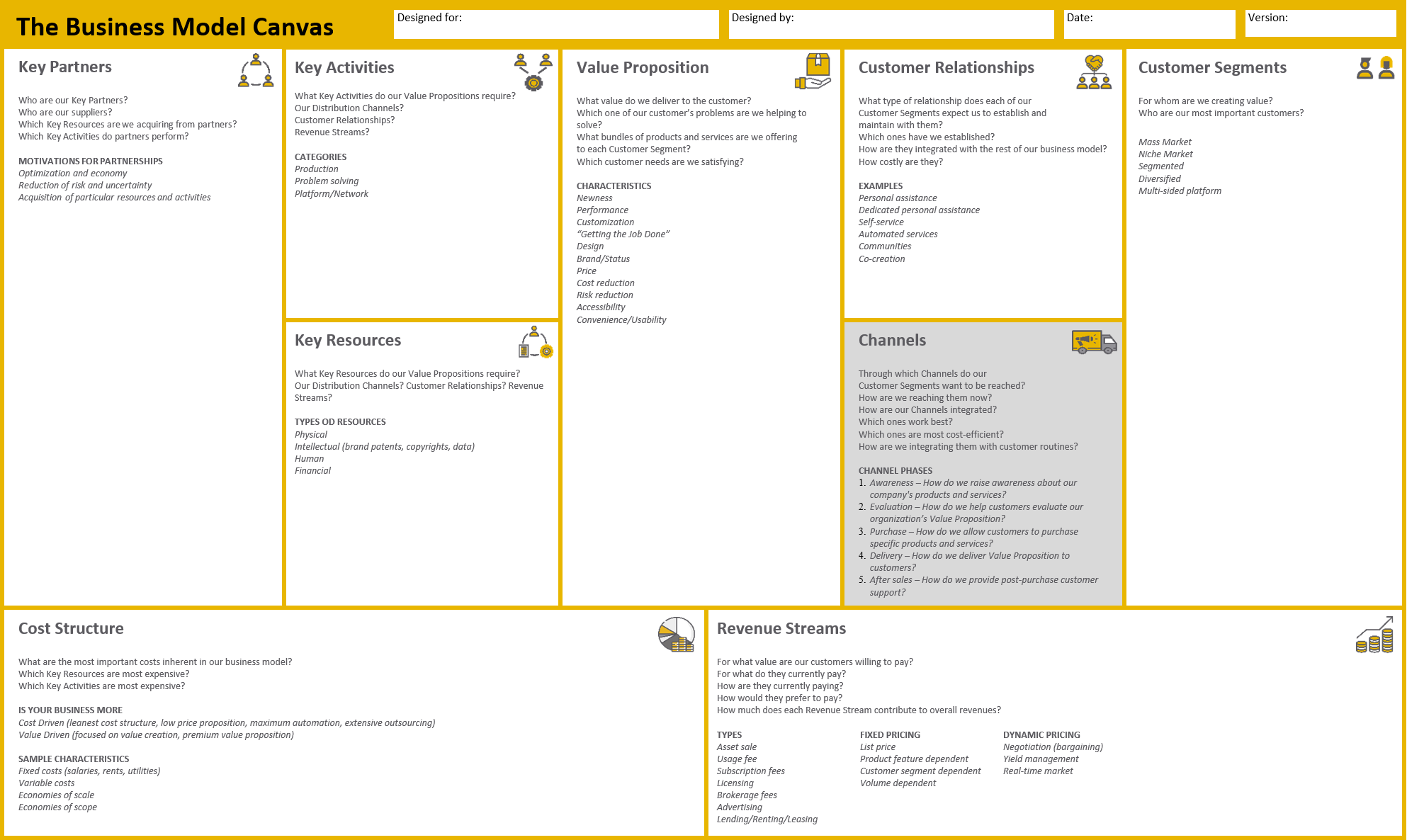
Channels and their position in the Business Model Canvas
The channels block on the Business Model Canvas defines how an organization communicates with and provides value to each of its customer segments. An organization liaises with its customers through these channels, which play a key role in defining customer experience and which influence post-purchase behaviour. Channels may be categorized as marketing (including promotion), sales, distribution and customer support.
Organizations use a variety of channels and strategies to attract and retain customers. When using the Business Model Canvas it is advisable to list separate channels related to each customer segment. If post-its are used, it may be a good idea to use different coloured post-its for each customer segment.
What are the key functions of channels?
-
- Act as a medium to showcase and provide information to customers and potential customers about the products and services which an organization provides (marketing/promotion);
- Enable existing and potential customers to evaluate the organization’s value proposition. This allows for the communication of benefits and potential advantages of the products or services on offer (marketing);
- Provide the facility for customers to purchase, rent or subscribe to the products or services (sales);
- Enable effective means of delivering the product or service to the customer (distribution);
- Provide customer support and after sales services.
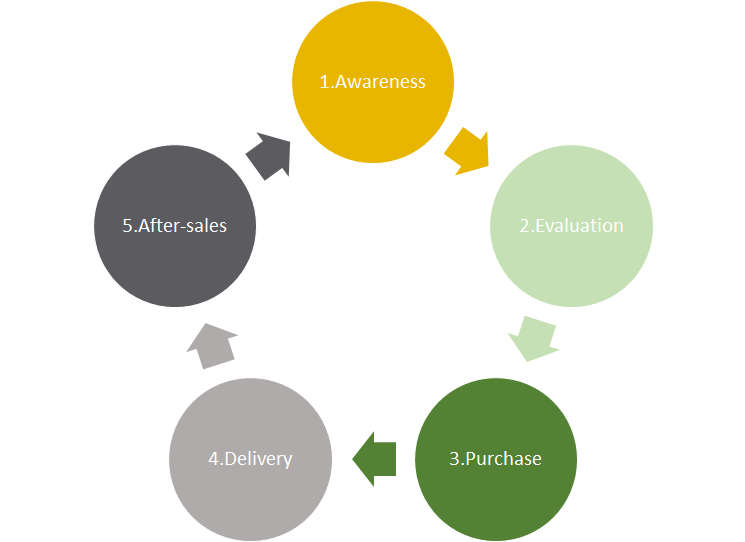 |
There are five distinct channel phases for communicating with customer segments. A channel may cover more than one of these phases. These are:
|
Five channels or phases for communication with customer segments
Awareness
This phase involves making customers and potential customers aware of the organization’s products, services and value proposition through marketing techniques, promotional efforts and advertising strategies.
Evaluation
This phase allows customers to evaluate an organization’s value proposition. It may involve surveys, reviews, the provision of information or feedback mechanisms. The aim is to demonstrate to customers that the value of the product or service is better than that of the competitors, with the aim of motivating them to make a positive evaluation that leads to a decision to purchase.
Purchase
This is the sales process. This phase provides customers with the possibility to purchase, rent or subscribe to the organization’s products or services. How will the product or service reach the customer? Decisions ought to be made as to whether the purchase will be effected through internet portals, social media platforms, brick and mortar stores or some form of self-check-out.
Delivery
This phase defines how the product or service will reach the customer. It incorporates the delivery of the value proposition to the customer. This generally takes place either through direct distribution (e.g., over the counter services, as in brick-and-mortar stores) or through indirect distribution (e.g., via delivery services, such as the postal service, courier service, etc.).
After-sales
This phase provides for after sales customer reassurance, care and support. It may involve a person-to-person counter service in-store, a call centre or a return policy. After sales service also incorporates maintenance, where problems encountered are dealt with.
Promotion channels could include:
- Digital TV.
- Word of mouth marketing.
- TV news, newspaper or radio coverage.
- Guest posting (e.g., writing an article for a blog, uploading positive reviews or a one-off for a media outlet).
- Internet discussion boards or platforms (e.g., Trip Advisor, Reddit or Quora, or user discussion boards for products such as cameras, cars, smart phones or software development).
- Interactive screens / terminals.
- Crowdsourcing.
- Product placement (inclusion of the product, service or brand in popular movies or TV series).
- Billboards.
- Advertorials.
- Newsletters.
The Distribution Channel
It is through distribution that an organisation makes its product or service available to consumers or users. Distribution refers to the means by which the product or service reaches the consumer and the place from where the product or service can be bought.
The distribution may be:
-
- Direct (being directly involved in selling the products or services, with organizations providing products or services directly to customers), e.g., from your own shop or from a fair, selling online, door-to-door, the use of a dynamic sales force, etc. Direct distribution implies a more direct relationship with the customer and higher profits.
- Indirect (through intermediaries or partners), e.g., wholesalers, retailers, partner stores, brokers, agents, etc. Although indirect distribution may imply a lower profit margin, it enables products or services to get to the market faster and it also implies less investment in infrastructure.
- Some organisations may use both direct and indirect distribution channels.
Direct distribution incorporates a direct-to-consumer approach, where the manufacturer or service provider controls all aspects of distribution. It allows for the possibility of higher profit margins, and it allows organizations to have more control over the whole distribution process;
Indirect distribution involves third parties and it frees manufacturers or service providers from delivery system costs. It allows for a broader reach towards a target audience and it allows organizations to focus on their core business, while outsourcing distribution to experts such as logistics organizations.
Five elements to consider when deciding on a distribution channel
-
- The number of customer segments and the size of the market;
- The investment (if any) required to establish the distribution channel. This should include an analysis of the profitability (or potential profitability) of each channel;
- Whether the product is standard or customized to suit the customer’s needs. In the latter case, the organization needs to establish some form of direct communication with customers;
- The amount of control which the organization wishes to exert over the distribution channel. In some cases, there is the possibility of open communication. In others, particularly when a distributor may potentially become a competitor, the relationship is likely to be more controlled and closed;
- It is relevant to assess the amount of time that it would take to build a healthy relationship of trust and goodwill with the distributor, broker or agent.
The Promotion Channel
The promotion of a product, service or brand is an important aspect where channels are concerned. Promotion is part of marketing. It allows for increased awareness and evaluation, together with recognition of the value of the product or service on offer (see, for example, the Volkswagen case study later in the presentation).
Promotion channels could include:
-
- Pay-per-click advertising.
- Search engine optimisation.
- Social media marketing (this allows for targeted marketing – which, when well-designed, may result in viral marketing – and it may include engaging influencers, many of whom use platforms such as Instagram, YouTube, Twitter or Tik-Tok).
Selecting and establishing effective channels
Channels are selected and established for effective communication between an organization and its customers. An organization’s choice of channels should align with customer segments and with their geographical, demographical, psychological and behavioural characteristics. These include communication preferences, preferred media platforms (e.g., traditional media, such as radio, TV or newspapers, which are likely to target a more elderly demographic who may not be digitally literate, or social media), and usage frequency.
Channels facilitate the retention of customer relationships, through establishing optimal methods of communicating an organization’s value proposition to customers. They provide cost-effective solutions that generate revenue and that best meet (and possibly exceed) customer expectations.
Some possible examples of channels:
-
- Direct online sale.
- Online retailer (e.g., Amazon, eBay, AliExpress, etc.).
- Traditional retailers (own or external brick-and-mortar stores).
- Social Media Platforms.
- TV / Radio / Newspapers.
- Phone sales / customer support.
- Internet direct.
- Catalogue direct.
- Sales team.
- Value-added reseller.
- Consultant.
- Retail sales agent.
- Manufacturer’s representative.
- Direct-to-distributors.
- Billboards.
- Wholesalers.
- Trade Fairs.
- Email.
- Postal service.
Examples and Good practice
Case study: Spotify
The business model for Spotify, which was founded in Sweden in 2006 and launched in 2008, is based on the application of a digital platform which offers music streaming and which connects artists with fans. When it was first introduced, Spotify acted as a huge disruption for businesses related to the distribution of music. Today, Spotify is one of the leading global music streaming platforms. Apple iTunes is Spotify’s main competitor.
-
- Spotify Distribution Channels: Spotify distributes its music online via browsers, computer and gaming devices (that work on Windows, MacOS, Linux computers, PlayStation, Xbox) and mobile devices (such as iOS, Windows, and Android smartphones).
- Spotify Marketing Channels: Spotify uses various platforms for marketing in order to increase its customer base. These include Snapchat and Facebook. Spotify also uses more traditional advertising, such as TV adverts, Public Relations bulletins and billboards.
Marketing and promotion: The Fun Theory Case Study
In 2010 Volkswagen used an advertising agency, DDB, in Stockholm, Sweden, to create promotional videos which fall under the ‘fun theory’. This involved a series of experiments, captured on video, to see whether making the world more ‘fun’ would improve people’s behaviour. The idea behind the videos, which all went viral, was to entice customers to choose an eco car (which is environmentally friendly), enabling the reduction of environmental impact without compromising on performance or the fun of driving.
The videos included Piano Stairs (probably the most successful), where subway stairs were turned into a piano in order to encourage people to walk up or down stairs instead of using the escalator. Another experiment involved a trash can which sounded like a 50-foot deep well and which motivated people to dispose of their trash appropriately. Yet another involved a bottle recycling centre which was turned into an arcade game. These promotional videos utilized very subtle brand placement – simply the VW logo at the end of the video. The fact that the videos went viral meant that the VW logo created positive associations related to ‘fun’ for millions of people all around the world (video clips on References and external links section).
Marketing and promotion: Guerrilla Marketing
|
Benetton Group S.r.l., founded in 1965 in Italy, is a well-known global fashion brand, notorious for developing controversial forms of brand promotion known as guerrilla marketing. In 1991 they launched the coloured condom campaign. This was an acknowledgement of the AIDS crisis which reached its peak in the late 1980s and early 1990s. Additional billboards and images which raised awareness of the AIDS crisis were launched in 1992 and 1993. |
 |
|
Yet another controversial and provocative image launched by Benetton in 1994 depicted the blood-soaked uniform of a Croatian soldier killed in Bosnia.
|
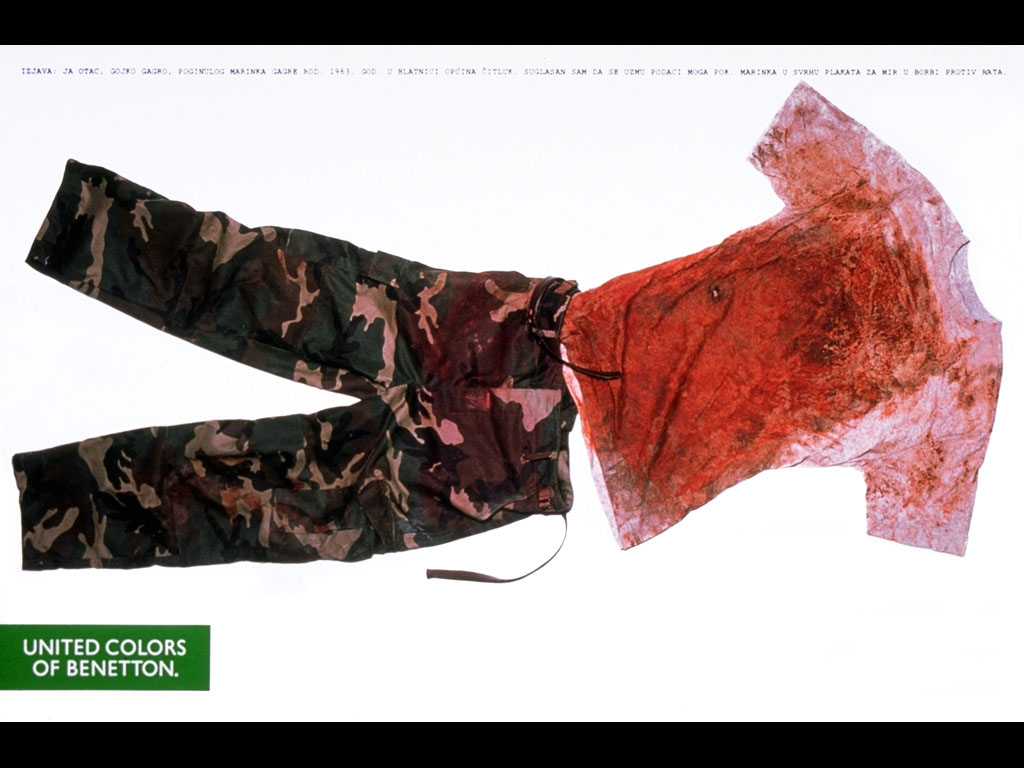 |
Benetton launched their ‘UNHATE’ foundation and the ‘UNHATE’ global campaign in November 2011. This aimed to reduce the prevalence of hatred around the world and to motivate reflection on images of reconciliation. The channels used for this campaign included billboards, websites, periodicals and newspapers. The images that were released depicted superimposed images of well-known political and religious leaders, such as Barack Obama, Angela Merkel, Pope Benedict XVI, Mahmoud Abbas, Benjamin Netanyahu and others, engaged in a kiss.
The motivation behind the ‘UNHATE’ campaign was two-fold. First, this campaign aimed to promote closeness between people of different faiths and cultures. Secondly, through this campaign, Benetton aimed to demonstrate that the company values the concepts of diversity and reconciliation. Through the company’s strategic use of controversial images, Benetton generated a great deal of attention which led to a substantial amount of content for the company’s social media and fashion publications.
|
See Benneton’s Press Release for more details. |
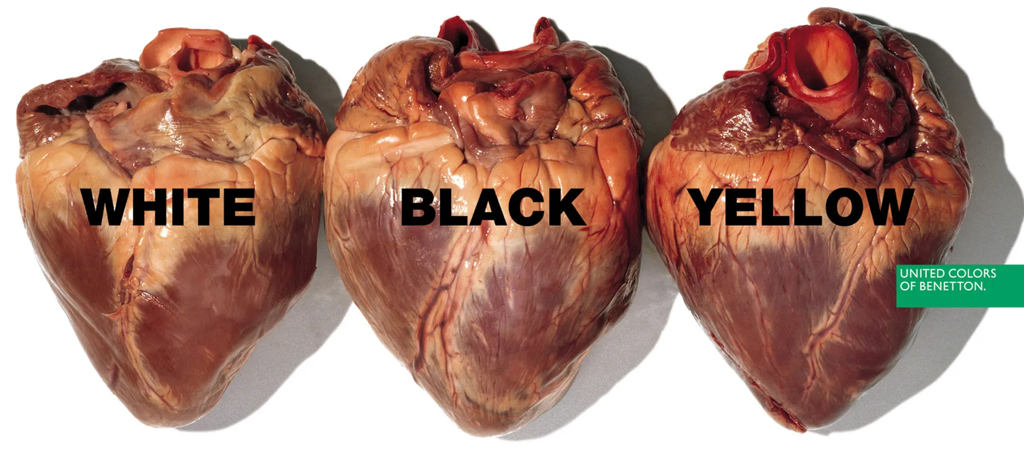 |
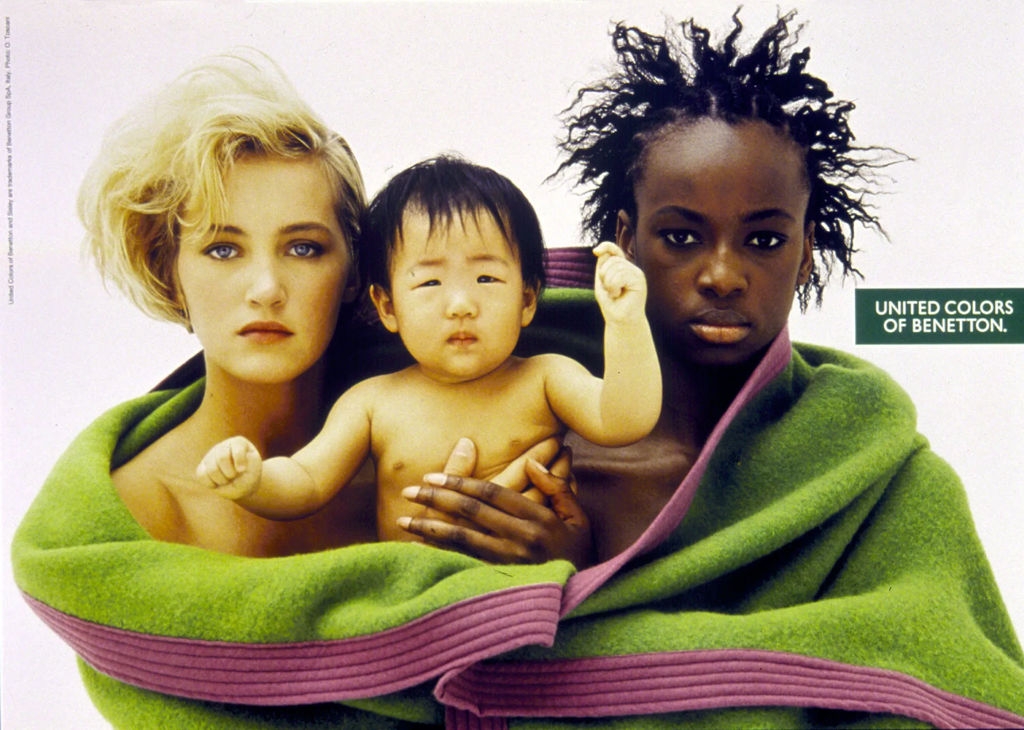 |
 |
Marketing and promotion: Crowdsourcing
Crowdsourcing advertising refers to the utilization of user-generated content to promote products or services. This is generally organized by means of a competition open for the general public, where material is submitted and later evaluated. The person or organization that submits the winning material generally receives a prize.
Crowdsourcing: Doritos Crash the Superbowl Campaign
Frito-Lay, Inc. is an American subsidiary of PepsiCo that produces various snacks including Doritos, which are a well-known brand of tortilla chips produced since 1964. Between 2006 and 2016, Frito-Lay launched eight editions of the Crash the Superbowl crowdsourcing competition with substantial prize money (up to one million US dollars). The competition asked consumers to submit their own 30 second Dorito commercial and at least one submission was selected and guaranteed to air during the Super Bowl, which is the annual championship game of the American National Football League held each year in February. More than 36,000 entries were submitted by fans during the ten years of the competition. This allowed for increased awareness of the product by means of crowdsourcing. It further allowed for a brief but very entertaining advert to be broadcast to millions of spectators and viewers.
Pepsi Max joined Doritos for the 2011 Super Bowl competition. Consumers could submit commercials for either brand. Five finalists were selected by the judges for each brand. Three commercials for each product were broadcasted during the 2011 Super Bowl. The competition was opened for international entries from countries where Doritos was sold in 2013. The 30 second finalists are available on YouTube.
After ending this competition in 2016, Doritos launched ‘Legion of the Bold’, a new competition which is not limited to the Super Bowl. This is another crowdsourcing competition which presents consumers with regular challenges related to the creation of adverts and which creates opportunities for young creatives and helps to fund their future careers.
Innovating the channels segment
Channels as a trigger for innovation
The channels segment in a business model canvas may act as a trigger for innovation. Three questions could be considered:
-
- If the elements listed under channels were to be simplified, would this result in increased efficiency, profitability and increased customer value?
- What if incremental innovation (minor changes that are original and effective) were to be considered?
- Could radical innovation (major changes that create disruption or a paradigm shift) be possible if tools to create radically new innovations were to be implemented?
Simplicity
Take each of the channels listed in turn and evaluate their value. Is it possible to simplify any of the channels listed? Is it possible to eliminate any of the channels listed that may not be of much use or which may not be profitable?
Incremental Innovation – SCAMPER
It is an example of one of the tools that may be used on each revenue stream. This asks:
-
- S: Substitute: Is it possible to substitute any of the channels? This may be done through an assessment of the channels on a business model canvas which is generated for a competitor company. Can any of the channels which the competition utilizes replace any of the current channels?
- C: Combine: Is it possible to combine two or more of the current channels?
- A: Adapt: Is there any way in which a successful and profitable channel could be adapted for another customer segment?
- M: Modify: Could an evaluation of each of the channels (as designed for each customer segment) be modified in any way to make it more successful and profitable?
- P: Put to another use: Looking at the channels for the competition (on their potential business model canvas), could any of these be put to another use in our organization’s business model canvas?
- E: Eliminate: Could any of the current channels be eliminated due to the resources committed to that revenue stream or due to lack of profitability?
- R: Reverse: On examination of each of the channels, could any of them be reversed (e.g., assessing the distribution channels and considering the opposite possibility or evaluating one of the promotional/marketing channels?
Radical Innovation
Various idea generation tools could be used to generate new channels or instigate radical innovation. One useful tool is ‘Random Input’. Innovative channels could be designed in this manner. This may involve focussing on either one of the customer relationships or on the customer segments and applying the random input tool here, with the aim of generating new ideas which would subsequently be tested.
Alternatively, the channels segment of the business model canvas could be considered (and completed), looking towards the future of the organisation. This would be done by addressing the question: What channels should we aim to have in ten-years-time for each of our customer segments/customer relationships? When conducting this exercise, an attempt to leave behind all current baggage (such as budgets and other constraints) should be done.
References and External Links
-
- ‘Fun theory’ video clips
https://www.youtube.com/watch?v=SByymar3bds&feature=emb_title - Additional examples of creative marketing
http://www.altterrain.com
https://www.adweek.com - Other campaigns are available through a simple search for keywords such as viral ads and guerrilla marketing on Google, YouTube, Instagram, etc.
https://strategyzer.uservoice.com/knowledgebase/articles/1194376-how-do-i-use-the-channels-building-block-of-the-buhttps://www.garyfox.co/business-model/business-model-channels/https://www.mindtools.com/pages/article/newCT_02.htm - Gassmann, O., K. Frankenberger and M. Csik, 2013. The St. Gallen Business Model Navigator. Working Paper, University of St. Gallen, Switzerland.
- Videos: Distribution and Marketing Channels overview.
https://www.youtube.com/watch?v=80N8cBp2LvU - Videos: Nike’s use of Controversial advertising.
https://www.youtube.com/watch?v=Yvkf88eSTrI
- ‘Fun theory’ video clips
Copyright @2021 – businessmodels.eu

